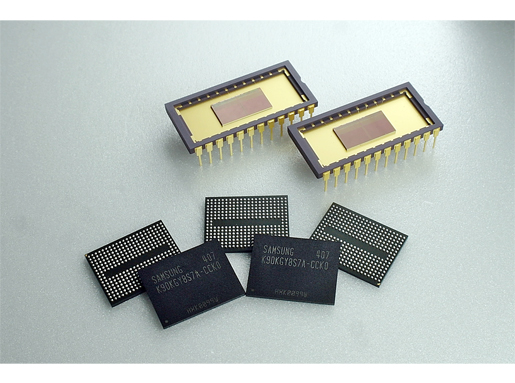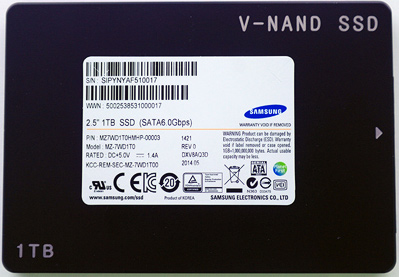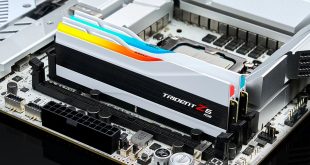Samsung Electronics on Thursday said it had begun mass production of its second-generation three-dimensional (3D) V-NAND flash memory. The new memory is projected to be more cost-efficient that the previous-gen 3D V-NAND thanks to higher integration. The company also unveiled its new series of solid-state drives that are based on the new memory.
The second-generation V-NAND flash memory from Samsung stacks 32 multi-level cell (MLC) NAND storage layers in one chip package, up from 24 layers in the first-generation V-NAND from the company. Samsung did not reveal capacity of the new chips; the first-gen V-NAND chips provided 128Gb of storage space. Samsung continues to use its 42nm process technology for production of the 2nd-gen V-NAND.
Samsung indicated that the 32-layer 3D V-NAND requires a higher level of design technology to stack the cell arrays than the previous 24-layer V-NAND. According to the manufacturer, the second-gen 32-layer V-NAND is more “production efficient” and is made using “essentially the same” production equipment that was used for making the first gen V-NAND.

The vertical layers connected using the through-silicon-vias (TSVs) of the 3D V-NAND allow larger areal bit densities without requiring smaller individual cells (hence, no need for ultra-thin manufacturing technology), which generally means higher reliability and performance. Samsung claims that its V-NAND exhibits at least two times the reliability (endurance) and writes data (tPROG, program time) at least twice as fast as multi-level-cell (MLC) type planar NAND flash memory.
Samsung also announced on Thursday a new series of solid-state drives based on the 2nd generation V-NAND flash memory. The new V-NAND SSD lineup for high-end PCs includes models with 128GB, 256GB, 512GB and 1TB capacities. Pricing of the drives as well as their exact specifications (keeping in mind that the drives use Serial ATA-6Gb/s interface, do not expect them to offer breakthrough performance) were not revealed. Later this year the company plans to introduce additional premium 3D NAND-based SSDs
“We increased the availability of our 3D V-NAND by introducing an extensive V-NAND SSD line-up that covers the PC market in addition to data centers,” said Young-Hyun Jun, executive vice president, memory sales and marketing at Samsung Electronics. “Look for us to provide a consistent, timely supply of high-performance, high-density V-NAND SSDs as well as core V-NAND chips for IT customers globally, contributing to fast market adoption of 3D NAND technology.”
According to a recent research report by Gartner, the global memory market is expected to grow from $75.5 billion in revenues to approximately $79.7 billion in 2017, while its NAND flash portion will continue to rapidly increase to reach a more than 50 percent share or about $44.6 billion in 2017.
Discuss on our Facebook page, HERE.
KitGuru Says: It is simply remarkable that Samsung begins to mass produce the second-generation 3D V-NAND flash memory when its rivals from other companies have not begun to even sample their vertical-NAND flash solutions.
 KitGuru KitGuru.net – Tech News | Hardware News | Hardware Reviews | IOS | Mobile | Gaming | Graphics Cards
KitGuru KitGuru.net – Tech News | Hardware News | Hardware Reviews | IOS | Mobile | Gaming | Graphics Cards




One comment
Pingback: Craig 4GB 2.8-Inch TFT Touch Color Screen MP4/MP3 Viedo Player(CMP646F) | orderlog